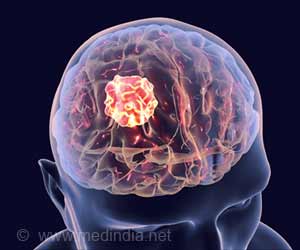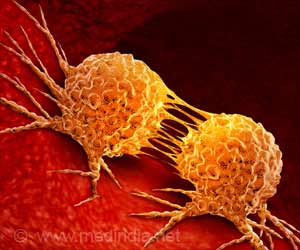A pancreatic cancer drug extends symptom-free survival in preclinical medulloblastoma models, targeting MYC oncogene in Group 3 tumors without toxicity.

Drug developed for pancreatic cancer shows promise against most aggressive form of medulloblastoma
Go to source).
Targeting MYC oncogene in Medulloblastoma with Triptolide and Minnelide
Medulloblastoma is the most common malignant brain tumor (in the cerebellum) in children, with survival rates varying across its four subtypes. Historically, Group 3 medulloblastoma has the poorest survival rates, around 40%.‘Medulloblastoma with MYC copies responds 100 times better to Minnelide. #cancerresearch #pediatrics #medindia’





The research, led by Jezabel Rodriguez Blanco, Ph.D., an assistant professor at MUSC Hollings Cancer Center and the Darby Children’s Research Institute at MUSC, was published in the Journal of Clinical Investigation.Her research focused on the drug triptolide, which is extracted from a vine used in traditional Chinese medicine, and its water-soluble prodrug version, Minnelide. A prodrug is an inactive medication that the body converts into an active drug through enzymatic or chemical reactions.
MYC (myelocytomatosis) is an oncogene, or gene that has the potential to cause cancer. MYC is dysregulated, or out of control, in about 70% of human cancers, and it shows up in much higher levels in Group 3 medulloblastoma than in the other medulloblastoma subgroups. Despite its well-known role in cancer, this oncogene historically has been considered impossible to target with drugs.
Despite its poor druggability, previous research in other cancers had shown that triptolide and its derivatives had the ability to target MYC. When Blanco was still a postdoctoral fellow at the University of Miami, her mentor, David Robbins, Ph.D., attended a presentation by the research team that showed that the more copies of MYC that a tumor has, the better that triptolide works.
“He came to me, and he told me, ‘You know, as Group 3 medulloblastoma has many MYC copies, you should get some research models and try the drug,” Blanco recalled. She started the project from scratch. “I started talking to people, getting cell lines and animal models, learning how to propagate them, getting the drug, using it.”
Advertisement
Mechanism and Efficacy of Triptolide and Minnelide in Group 3 Medulloblastoma
Blanco received a three-month grant intended for cancer center trainees to develop ideas. Then her lab at the time was awarded a one-year grant from the Southeastern Brain Tumor Foundation in 2018. Since then, she’s received no additional funding specific to this project.Even as she started her faculty position at MUSC and began to focus most of her research on the Sonic Hedgehog subgroup of medulloblastoma, she continued to work on the Group 3 research as a side project. She knew how well triptolide was working in these hard-to-treat tumors, and she did not want her initial results to fall through the cracks.
Advertisement
“It was affecting MYC gene expression by affecting the RNA polymerase II activity, and then it was affecting how long the protein lasts. So, the fact that it’s working through two different mechanisms on this oncogene may explain why it’s so effective in tumors that have extra copies of MYC,” she said, explaining that RNA polymerase II is a protein that helps to make copies of DNA instructions, which are used to produce proteins in the cell.
Despite the challenges of narrowing down the mechanism of action specific to cancer, it was quite clear that however it worked, it did work, she said.
The efficacy was 100 times higher in the Group 3 tumors with extra MYC copies than in the Sonic Hedgehog tumors with normal levels of MYC, she said. She found that Minnelide reduced tumor growth and the spread of cancer cells to the thin tissues that cover the brain and spinal cord, called leptomeninges. It also increased the efficacy of the chemotherapy drug cyclophosphamide, which is currently used in treatment.
Blanco decided to move forward with publication rather than waiting to write a manuscript that answered all possible questions. Knowing that most parents whose children receive a Group 3 medulloblastoma diagnosis will lose their child in less than two years was the incentive she needed to push this work out.
“There was a point at which I could not hold this data anymore because it was working so well that it needed to go out,” she said. “The preclinical models were showing such a nice efficacy that it was like, ‘OK, I cannot keep on holding this work, digging deeper into the mechanism of action because the kids that have Group 3 medulloblastoma are dying while we are doing those experiments.”
Minnelide has been tested or is currently in testing in phase I and phase II clinical trials of adults with different types of cancer, including pancreatic cancer, where it showed some efficacy.
Reference:
- Drug developed for pancreatic cancer shows promise against most aggressive form of medulloblastoma - (https:hollingscancercenter.musc.edu/news/archive/2024/08/01/drug-developed-for-pancreatic-cancer-shows-promise-against-most-aggressive-form-of-medulloblastoma)
Source-Eurekalert















